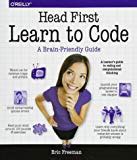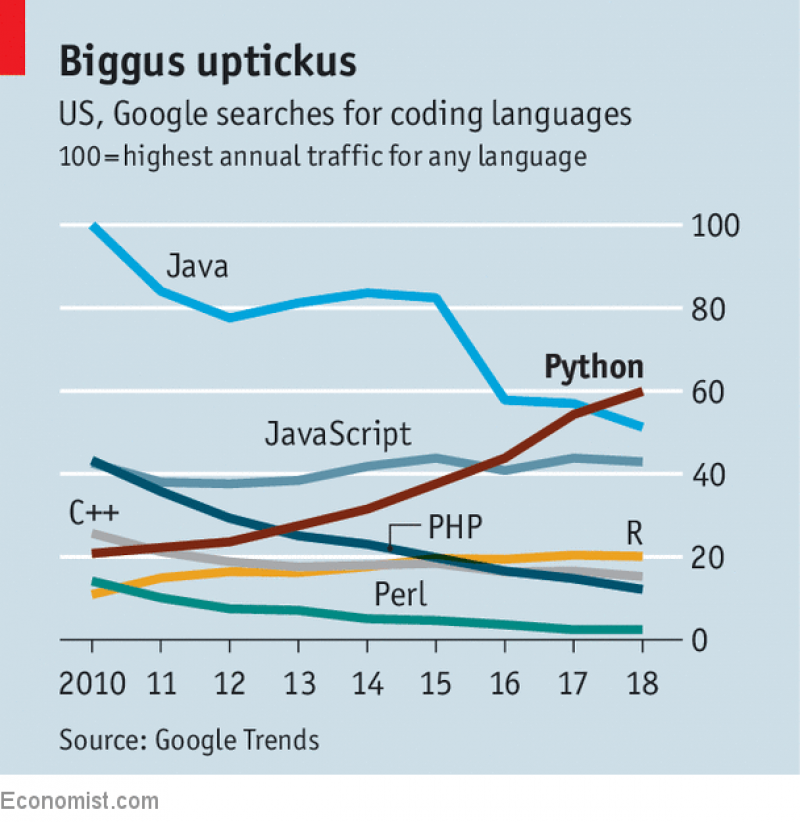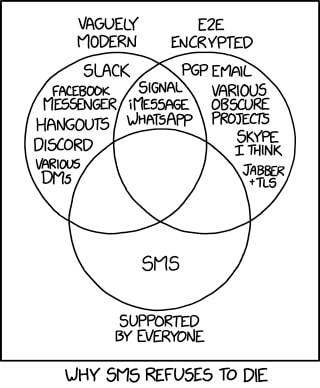Python Founder’s Three Principles
- Make an easy to read language
- Permit users to generate their own packages and modules
- Create a short, mysterious name for the program
IN DECEMBER 1989 Guido van Rossum, a Dutch computer scientist, set himself a Christmas project. Irked by shortcomings in other programming languages, he wanted to build his own. His principles were simple. First, it should be easy to read. Rather than sprawling over line-endings and being broken up by a tangle of curly braces, each chunk would be surrounded with indented white space. Second, it should let users create their own packages of special-purpose coding modules, which could then be made available to others to form the basis of new programs. Third, he wanted a “short, unique and slightly mysterious” name. He therefore called it after Monty Python, a British comedy group. The package repository became known as the Cheese Shop.
The Economist, July 2018
Python: An All-purpose Language
Below are extracts from the article titled “Python has brought computer programming to a vast new audience” published in The Economist back in July 2018:
- Nearly 30 years after his Christmas invention, Guido van Rossum resembles a technological version of the Monty Python character who accidentally became the Messiah in the film “Life of Brian”. “I certainly didn’t set out to create a language that was intended for mass consumption,” he explains.
- Perhaps unnerved by a future filled with automated jobs, 90% of American parents want their children to study computer science.
- For professions that have long relied on trawling through spreadsheets, Python is especially valuable. Citigroup, an American bank, has introduced a crash course in Python for its trainee analysts.
- Some of the most alluring packages that Pythonistas can find in the Cheese Shop harness artificial intelligence (AI).
- Marketers, for instance, can use the language to build statistical models that measure the effectiveness of campaigns. College lecturers can check whether they are distributing grades properly. Even journalists on The Economist, scraping the web for data, generally use programs written in Python to do so.
How to Learn Python
Below are a few books and resources we found useful in learning Python at the beginner stage. These recommendations, in turn, provide intermediate and advanced resources to use once one develops the very basic interests and skills, so we won’t expand further (leave us a comment or email us if you want specific feedback, though). Also, check your local library for availability.
- Python.org’s Python For Beginners
- Thonny.org – It’s a Python IDE (integrated development environment) for beginners. It was developed at University of Tartu, Estonia and designed specifically for learning and teaching programming. We like the step-through-code feature.
- Two other IDEs for beginners: Geany (may use with other languages besides Python) and Idle (it is built-in with Python). The blog “The Coding Room” shared a quality summary titled “3 Excellent Python IDEs for beginners – Thonny, Geany or Idle” in Sep. 2019.
- Automate the Boring Stuff with Python: Practical Programming for Total Beginners by Al Sweigart
- Note: The author shares a PDF version of his book for free at his website, too.

- Web Scraping with Python by Chris Reeves
- Reeves originally published 21 videos in chronological order (circa 2014).
- Tutorials provide the fundamentals of scraping and data mining.
- Includes example of setting-up a basic algorithmic trading program.
- Author uses open source tools such as Python, Beautiful Soup, and Mechanize.



A Python Conference — PyCon 2020 — is in Pittsburgh April 15-23. Check out the blog posts about the Hatchery, Tutorial schedules, and more.
Blog: https://pycon.blogspot.com/
Main page: https://us.pycon.org/2020/
The offlink to HackerNoon is worth reviewing. Stefan Thelin
( @stefan_thelin ) provides two examples (one is referenced in the second article/offlink) of how to use Python in a corporate development/M&A environment. It includes creating a basic Monte Carlo simulation within a DCF model.